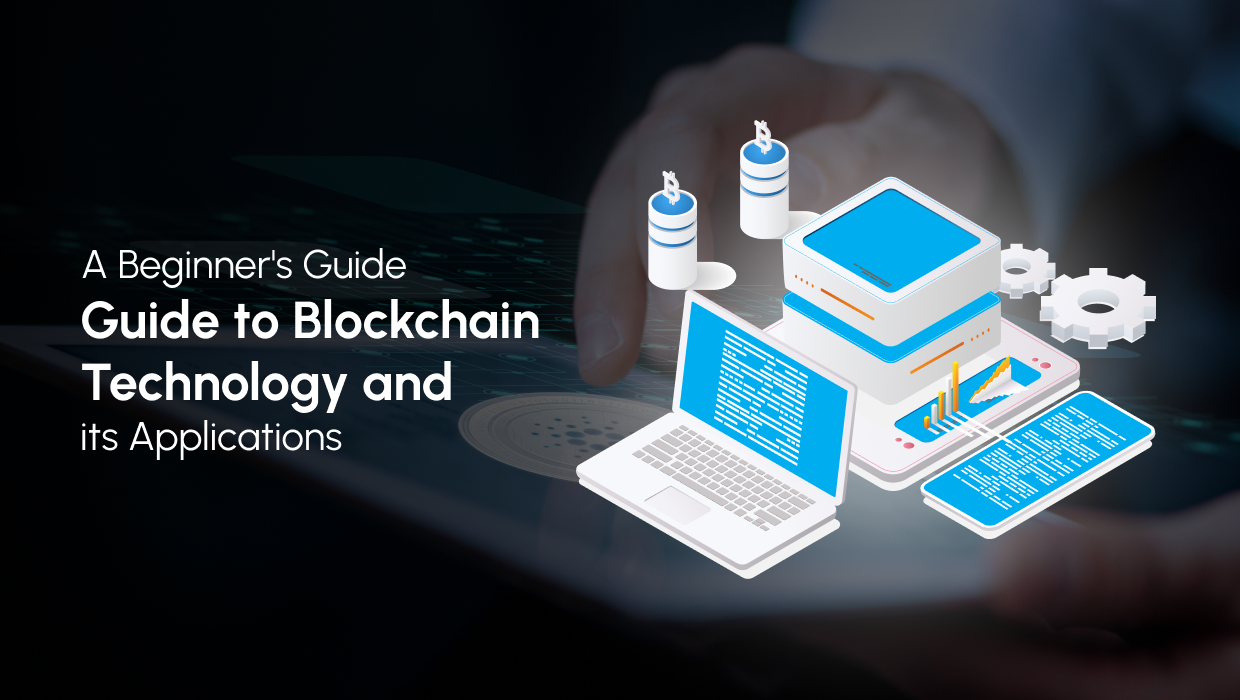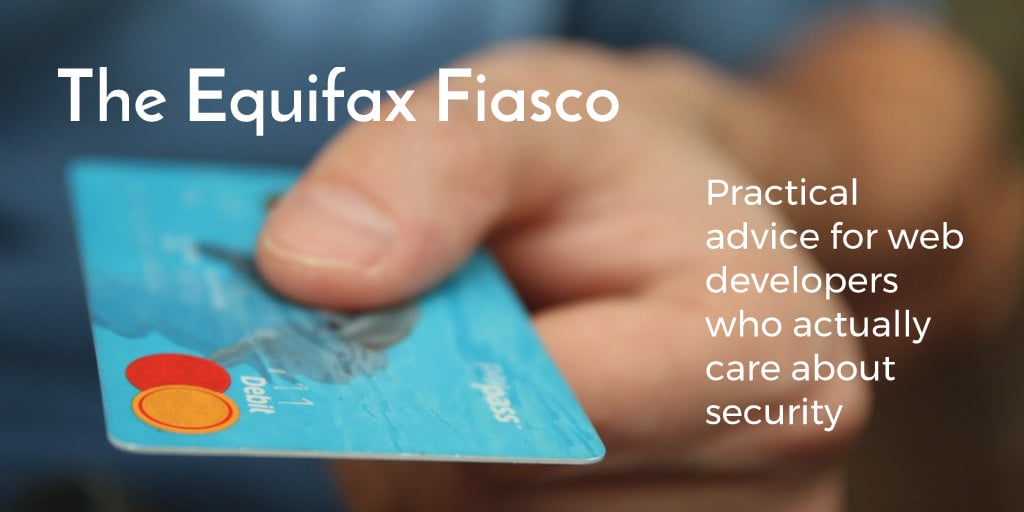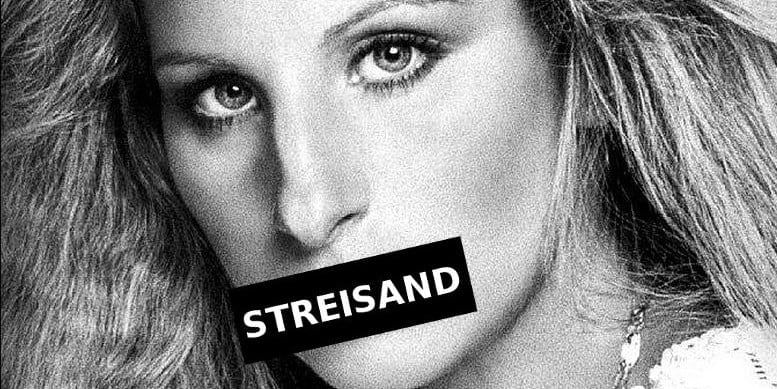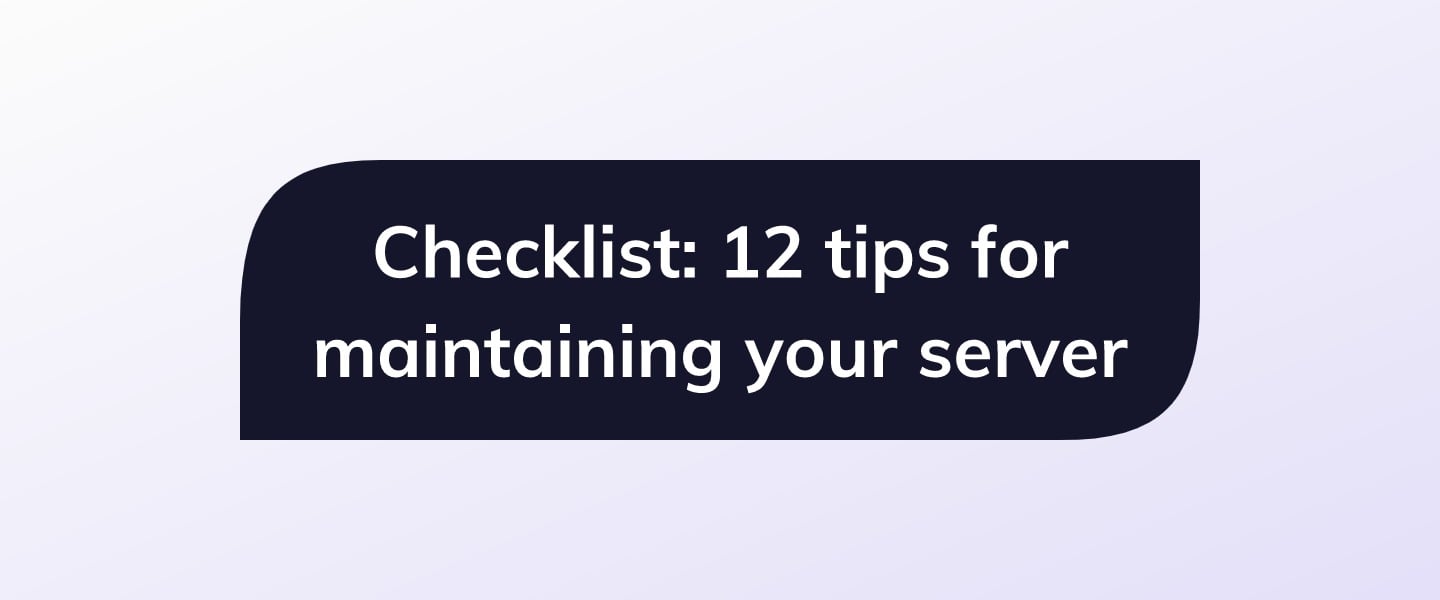Blockchain, the mysterious technology that both individuals and institutions are increasingly becoming interested in, as it is promising to become an integral part of our future. With promises to revolutionize financial transactions, gaming, and supply chain management and beyond.
So, what is a Blockchain, exactly? And why does it matter?
In this article, I will go into the ins and outs of the blockchain technology, its applications, and what it will mean for us in the next few years.
What is a Blockchain and Why is It So Important?
Blockchain technology is a special kind of digital record-keeping system that spreads information across many computers and makes it really hard to change. It is essentially a special database that is distributed across a network of computers. The computers in this network are known as nodes.
This database is used to securely record and verify information. By design, the Blockchain is a chain of blocks, hence the name. Each block contains information on transactions. Once a block is added to the chain, it becomes almost impossible to tamper with.
Blockchain is used in various ways, such as keeping track of digital money or ensuring the authenticity of products in supply chains. By decentralizing control and employing cryptographic techniques, blockchain provides enhanced transparency, security, and trustworthiness, making it resistant to unauthorized modifications or manipulations.
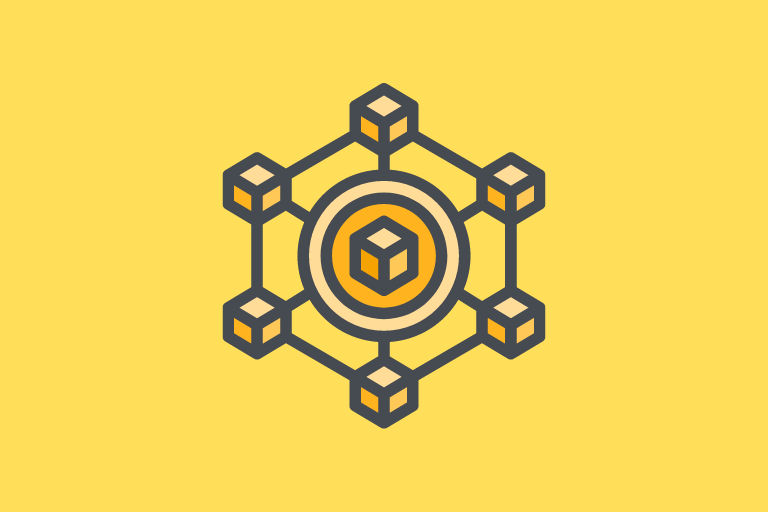
Blockchain technology operates in a decentralized manner, meaning that no single authority has control over it. Instead, it relies on the collective agreement of the network to secure and validate its contents.
Once information is added to the blockchain, it becomes extremely difficult to modify or tamper with, unless there is a consensus among all the participants in the network allowing for that change to happen. This decentralized approach ensures the integrity and trustworthiness of the blockchain, as no single entity can unilaterally alter its data without agreement from the entire network.
In addition to its security, Blockchain also helps in eliminating intermediaries. Traditionally, many transactions require intermediaries, such as banks, brokers, or lawyers, to establish trust between parties.
With blockchain, trust is built into the technology itself, eliminating the need for intermediaries in certain transactions. This not only reduces costs but also increases the speed and efficiency of processes by removing unnecessary layers of intermediation.
Additionally, Blockchain has the potential to streamline complex processes and reduce inefficiencies in various industries. By providing a shared and synchronized database, blockchain eliminates the need for reconciling multiple versions of records, reducing paperwork, and minimizing manual errors. This can lead to significant time and cost savings.
Blockchain vs. Bitcoin. Or... A Brief History of Blockchain
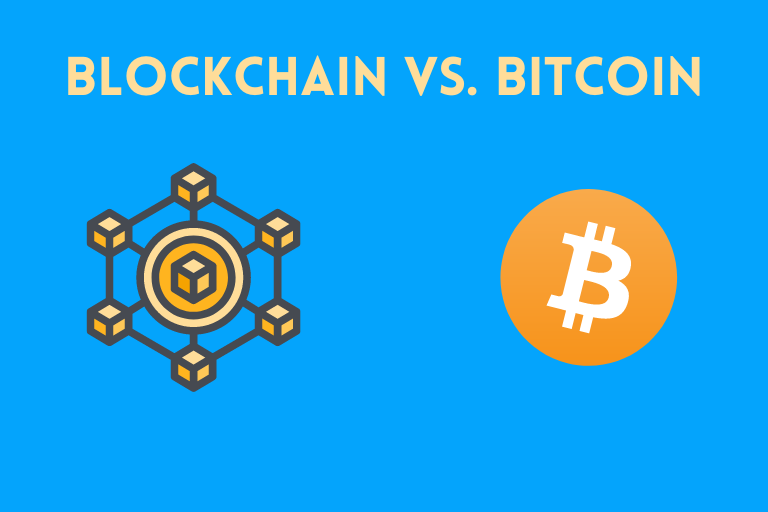
The idea of a blockchain-like technology started back in 1991. Two researchers named Stuart Haber and W. Scott Stornetta wanted to find a way to make sure that digital records couldn't be changed or tampered with. They came up with a clever solution: they created a system that would save documents as blocks in a chain that was really hard to break.
A year later, in 1992, Haber and Stornetta made their system even better. They added a feature that allowed multiple documents to be stored in a single block.
This made the system more efficient and useful. It was like an early version of a blockchain, but unfortunately, it didn't become popular at the time.
Back in 2004, a computer scientist named Hal Finney came up with an important idea. He created something called the first reusable proof-of-work (RPoW) system. This system was a way to show that someone had done a certain amount of computing work.
This idea of proof-of-work, often referred to as a consensus algorithm later became a central part of the process of how Bitcoin validates new blocks and maintains the integrity of the blockchain (More on this proof-of-work thing in the next section).
Then, in 2009, Bitcoin officially launched as the first established cryptocurrency and notable application of blockchain and proof-of-work validation.
What is Bitcoin, you ask?
Bitcoin is a type of digital money that uses a combination of a decentralized blockchain and proof-of-work validation to make sure that specific amounts of Bitcoin are transferred between people in a way that doesn't require trusting a third party (such as a bank). It is often referred to as a peer-to-peer network, indicating that two participants can transact without a third-party intermediary overseeing the process.
This peer-to-peer nature is one of the fundamental aspects of Bitcoin's design, enabling trustless transactions, which can be done securely and reliably without the need for participants to have absolute trust in each other.
How Blockchain Works: Decentralization
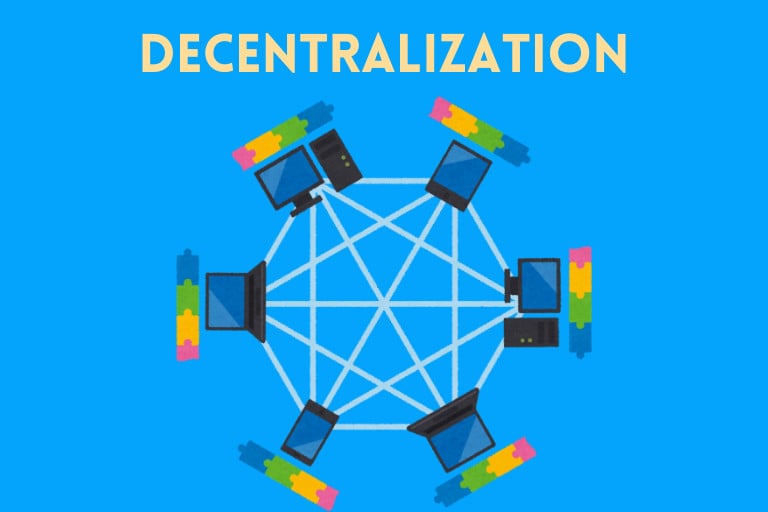
Blockchain is both decentralized and distributed in nature. Decentralization means that there is no central authority or single entity controlling the blockchain. Instead, it operates on a network of computers, known as nodes, spread across the world.
These nodes work together to maintain and validate the blockchain, ensuring transparency and eliminating the need for intermediaries like banks. On the other hand, distribution refers to the copies of the blockchain that exist on multiple nodes.
Each node maintains a complete copy of the blockchain, and whenever a new transaction is added, it is propagated to all nodes in the network. This redundancy ensures that even if some nodes go offline or become compromised, the blockchain remains intact and accessible, making it highly secure and resistant to tampering.
For example, let's say Bob has 2 bitcoins and Alice has 3 bitcoins. Whenever a change of data happens on the blockchain, such as Bob transferring 2 bitcoins to Alice. A new block is added to the blockchain recording this change, subtracting 2 bitcoins from Bob's account, leaving him with 0 bitcoin, and adding 2 bitcoins to Alice's account, which makes her a rich-5-bitcoin-owner.
This change is then broadcasted throughout the network, and every single node needs to approve and apply this change so that the blockchain continues to function. Once this new block is validated and added to the blockchain, every node on the network will now be aware that Alice now has 5 bitcoins and Bob has 0 bitcoins.
But... How are new transactions verified? What if Bob doesn't have the 2 bitcoins he claims to have? How can new data be validated? And how to reach a consensus on the state of the blockchain in a decentralized network? The answer is Consensus algorithms. A mystery we will unravel in the next section.
Consensus Algorithms: Proof-of-Work and Proof-of-Stake
Proof-of-Work
The role of proof-of-work in Bitcoin and in many other blockchain applications is fundamental to its operation and security. Proof-of-work (PoW) is a consensus mechanism used in the Bitcoin network to validate and confirm transactions and maintain the integrity of the blockchain.
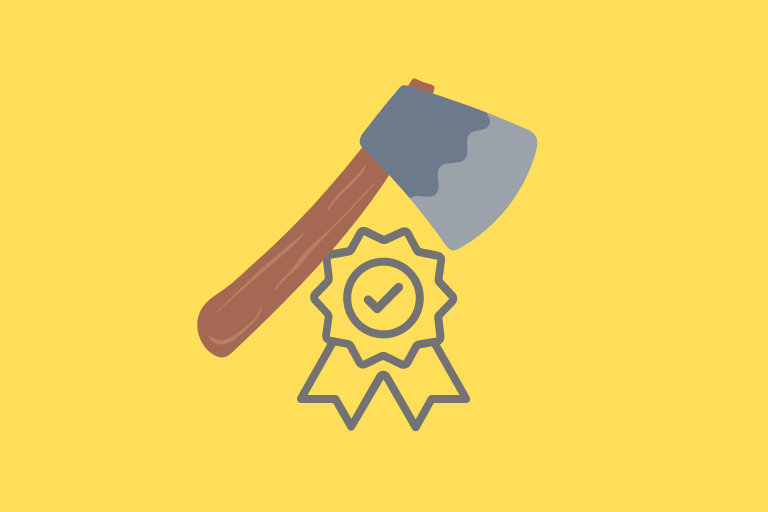
For example, in the Bitcoin system, users can act as validators, using computers to compete against each other to solve complex mathematical puzzles through computational power.
These puzzles require significant computational effort and energy consumption. When a validator successfully solves a puzzle, they add a new block of verified transactions to the blockchain and are rewarded with newly minted Bitcoins. This process is known as mining, and these validators are called miners.
The purpose of the proof-of-work mechanism is to ensure that the creation of new blocks is not easily manipulated or controlled. It adds a layer of security by making it computationally expensive and time-consuming to alter the transaction history recorded in the blockchain.
To change a single transaction or tamper with the blockchain's history, an attacker would need to possess more than 51% of the network's computational power, which is highly impractical and costly.
The distributed nature of the network and the computational effort required for mining make Bitcoin's blockchain resistant to fraud and tampering.
Proof-of-work also plays a vital role in determining the consensus in situations where multiple miners find solutions simultaneously.
The longest chain with the most accumulated computational work is considered the valid chain, ensuring that the majority of the network agrees on the transaction history.
While proof-of-work is essential for Bitcoin's security, it does have drawbacks, such as high energy consumption and the potential for centralization of mining power. As a result, alternative consensus mechanisms, such as proof-of-stake, have been developed to address these concerns while still maintaining the security and integrity of the blockchain.
Proof-of-Stake
Proof-of-Stake (PoS) is a consensus mechanism used in some blockchain networks as an alternative to Proof-of-Work. In a PoS system, instead of miners solving complex puzzles, the ability to create and validate new blocks is based on the ownership or "stake" of cryptocurrency held by participants.
Essentially, the more cryptocurrency a person has, the more likely they are to be chosen to validate transactions and add blocks to the blockchain. This means that rather than competing through computational power and energy consumption, PoS rewards those who hold and "stake" their cryptocurrency.
PoS is often considered more energy-efficient and cost-effective than PoW, and it aims to promote a more sustainable and inclusive approach to blockchain consensus.
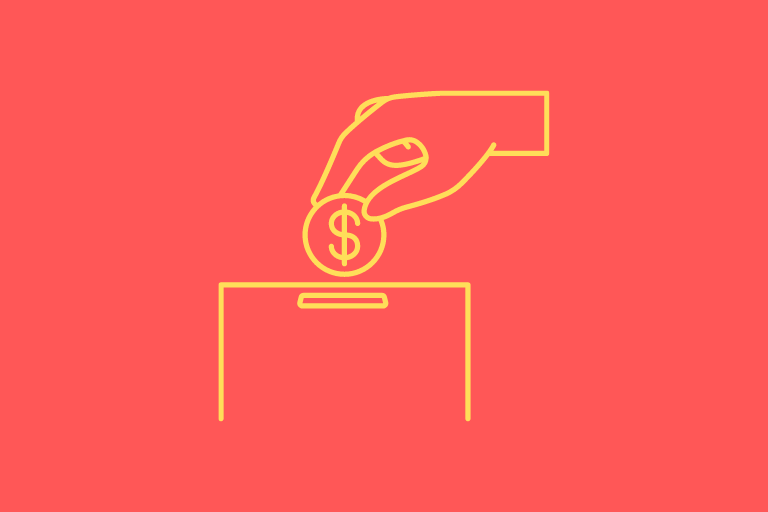
Proof-of-Stake can prevent a participant with more than 51% of the stake from tampering with the blockchain data for their benefit by making it economically irrational for them to act maliciously, as their significant stake would be at risk of losing its value if they were to disrupt the network's integrity.
Here are a few examples of cryptocurrencies that utilize the Proof-of-Stake (PoS) consensus mechanism:
- Ethereum 2.0 (ETH): Ethereum, one of the largest blockchain platforms, has transitioned from Proof-of-Work to a Proof-of-Stake model with its Ethereum 2.0 upgrade. This upgrade aims to improve scalability, security, and energy efficiency.
- Cardano (ADA): Cardano is a blockchain platform that utilizes a PoS consensus algorithm called Ouroboros. It aims to provide a secure and scalable infrastructure for the development of decentralized applications (dApps) and smart contracts, more on dApps and smart contracts later.
- Cosmos (ATOM): Cosmos is a decentralized network of independent blockchains that uses a PoS consensus algorithm called Tendermint. It aims to enable interoperability between different blockchain networks and facilitate the exchange of digital assets.
Step-by-Step Process of Adding Transactions to The Blockchain
To understand how the blockchain network verifies transactions, let's take a look at what's happening at the blockchain level when Bob sends 2 bitcoins to Alice:
- Bob creates a transaction: Bob creates a digital transaction specifying that he wants to send 2 bitcoins to Alice. He signs this transaction with a private cryptographic key only he knows about, which ensures the transaction's authenticity, so that no one else can pretend to be Bob in this process.
- Transaction broadcasting: Bob shares the transaction with the Bitcoin network, informing everyone that he intends to send 2 bitcoins to Alice.
- Transaction verification: Miners and nodes in the network receive Bob's transaction and check its validity. They confirm that Bob has 2 bitcoins and that his transaction is correctly signed with his private key.
- Transaction inclusion in a block: Valid transactions, including Bob's transaction, are collected by miners who group them together into a block.
- Block mining: Miners compete to solve a mathematical puzzle related to the block they created. The successful miner finds the solution and broadcasts the solved block to the network.
- Block validation: Other miners verify the solution to ensure its correctness.
- Block addition to the blockchain: When the network confirms the validity of the solved block, it is added to the existing blockchain. Bob's transaction, along with other transactions in the block, becomes a permanent part of the chain.
- Reward distribution: The miner who successfully mined the block is rewarded with newly created Bitcoin.
- Confirmation of transaction: Once the block is added to the blockchain, Bob's transaction is considered confirmed. This means that the 2 bitcoins are transferred from Bob's account to Alice's account, and the transaction is recorded in the blockchain.
And that's how a transaction between Alice and Bob would be added to the Bitcoin blockchain!
Ethereum and Smart Contracts
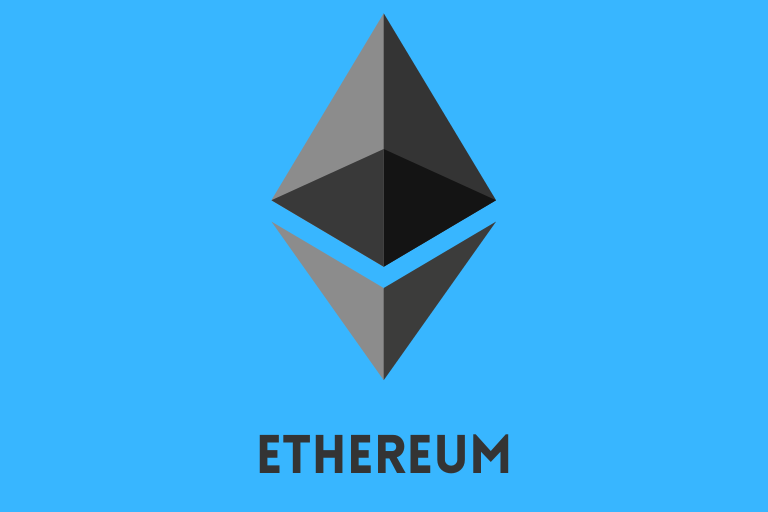
Ethereum is a decentralized platform that enables developers to build and deploy smart contracts and decentralized applications (DApps). It goes beyond being just a cryptocurrency like Bitcoin and serves as a platform for executing programmable transactions.
A smart contract is like a digital agreement or a set of rules that automatically executes when certain conditions are met. It eliminates the need for intermediaries, such as lawyers or banks, as the contract's terms are enforced by the Ethereum network itself.
Let's say you want to rent an apartment from someone using Ethereum. You and the landlord create a smart contract that includes all the terms of the agreement, such as the rental duration, monthly payment, and conditions for deposit refunds. This smart contract is written in a special programming language called Solidity, which Ethereum understands.
Now, once you send the required amount of cryptocurrency (let's say Ether) to the smart contract, it automatically executes the agreement.
For example, it could transfer ownership of a digital key to the apartment to you, while locking the deposit amount in the contract until the end of the lease. The smart contract ensures that neither you nor the landlord can cheat or change the terms once they are agreed upon.
While it can be used as a simple currency like Bitcoin, Ethereum and its smart contracts have far more applications and potential use cases. They can be used in decentralized finance (DeFi), where people can lend, borrow, or trade cryptocurrencies without relying on banks.
Ethereum also powers decentralized applications (DApps) like online marketplaces, where buyers and sellers can interact directly and securely without intermediaries. More on DeFi and DApps in the next section.
Note: While being the most popular, Ethereum is not the only platform that supports smart contracts. Other platforms like Cardano, Polkadot, and Tron also support smart contracts and offer their own unique features and advantages. Each platform has its own ecosystem, community, and characteristics that developers and users consider when choosing a platform for their specific needs.
Decentralized Finance (DeFi) and Decentralized Applications (DApps)
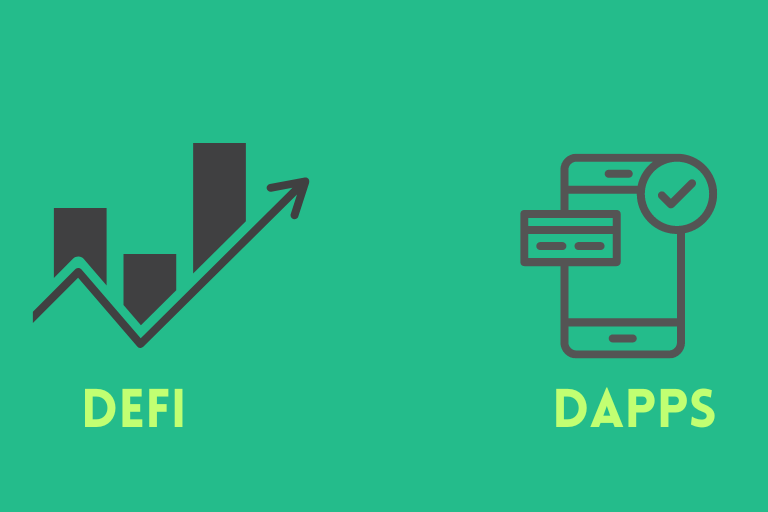
Decentralized Finance (DeFi) refers to a system where financial activities and services are conducted using blockchain technology without relying on traditional intermediaries like banks or brokers. It aims to make financial transactions and services more accessible, transparent, and inclusive.
For example, imagine a financial playground built on a blockchain. Instead of going to a bank to borrow money or earn interest on your savings, you can participate in various DeFi protocols directly from your computer or smartphone.
For example, you can lend your cryptocurrency to others and earn interest on it, or you can borrow cryptocurrency by using your assets as collateral. All these transactions are executed through smart contracts, ensuring that the rules are followed automatically without the need for intermediaries.
Here are a few examples of DeFi applications, note that these are also considered Decentralized Applications (DApps):
- Decentralized Lending and Borrowing: DeFi platforms like Aave, and MakerDAO enable users to lend or borrow cryptocurrencies without relying on traditional banks. Users can lend their cryptocurrencies and earn interest on their holdings, while borrowers can collateralize their assets and borrow funds. These platforms utilize smart contracts to automate the lending and borrowing process, determining interest rates and managing collateral without intermediaries.
- Decentralized Exchanges (DEX): DEX platforms like Uniswap, and PancakeSwap allow users to trade cryptocurrencies directly with each other without the need for a centralized exchange. These exchanges use automated market-making algorithms and liquidity pools to facilitate trading, with smart contracts executing the transactions. DEXs provide users with control over their funds and enable peer-to-peer trading in a decentralized and transparent manner.
Decentralized Applications (DApps) don't have to be just DeFi applications. Any app that runs on a blockchain network, offering various services and functionalities without being controlled by a single entity is considered a DApp. These applications are built to be transparent, secure, and resistant to censorship. DApps can be anything from games and social media platforms to marketplaces and financial services.
Imagine a social media platform like Facebook, but instead of all the data and control being centralized with the company, it runs on a blockchain network. This means that users have more control over their data and can interact directly with others without relying on a central authority.
Additionally, the platform's rules and operations are governed by smart contracts, ensuring transparency and fairness.
Similarly, a decentralized marketplace DApp can allow people to buy and sell goods directly, without the need for a middleman like Amazon or eBay. The transactions are executed through smart contracts, eliminating the need for a central authority to oversee the process. This creates a more peer-to-peer and transparent trading environment.
Blockchain Applications in Supply Chain Management
Blockchain applications in supply chain management provide a transparent and secure way to track and verify the movement of goods throughout the supply chain.
With blockchain, each step of the supply chain process can be recorded and stored in a decentralized and immutable ledger.
This ensures that the information related to product origins, manufacturing, quality checks, and shipment details is reliable and cannot be tampered with. By implementing blockchain in supply chain management, companies can enhance traceability, reduce fraud, improve efficiency, and build trust among stakeholders.
Blockchain enables real-time visibility, facilitates seamless collaboration between parties, and helps in identifying and resolving issues quickly, ultimately leading to a more efficient and reliable supply chain ecosystem.
Blockchain Applications in Voting Systems
Using a Blockchain in voting systems has the potential to revolutionize the way elections are conducted.
By leveraging the transparency, security, and immutability features of blockchain technology, voting processes can become more trustworthy and tamper-proof. Each vote can be securely recorded on the blockchain, eliminating the possibility of fraudulent activities or manipulation.
Blockchain-based voting systems can provide a verifiable and auditable trail of votes, allowing voters and authorities to independently verify the accuracy of the results. This can enhance voter privacy, prevent double voting, and enable remote or online voting with enhanced security measures.
The Challenges of Blockchain Technology
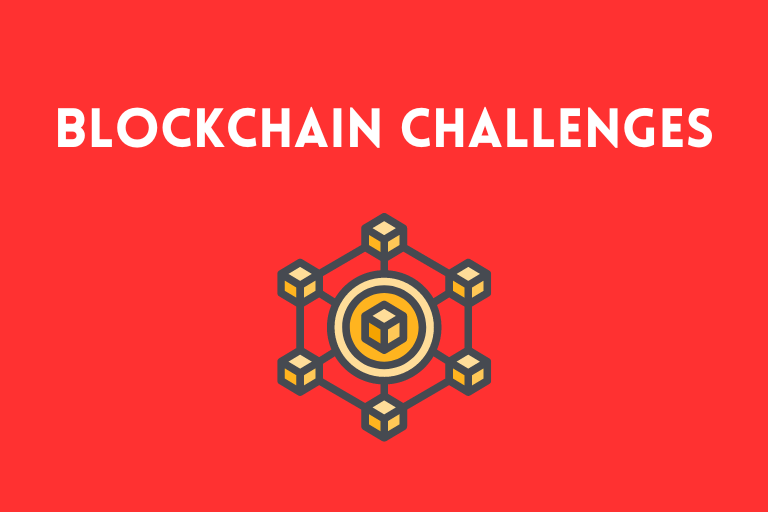
Blockchain technology holds incredible promise, but it faces some important challenges that need to be tackled for it to be widely adopted.
One challenge is scalability, as current blockchain networks often struggle to handle a large number of transactions quickly and efficiently.
Another challenge is the high energy consumption associated with certain blockchain consensus mechanisms, especially Proof-of-Work.
Additionally, ensuring privacy and security without compromising the transparency and immutability features of blockchain is a complex task.
Regulatory and legal frameworks also need to catch up with the unique aspects of blockchain technology. Things like smart contracts and tokenized assets introduce new challenges that require new rules and guidelines. Governments and regulatory bodies need to work closely with the industry to develop frameworks that ensure compliance and protect consumers.
Overcoming these challenges will be crucial for blockchain to realize its full potential and achieve widespread adoption in various industries.
Conclusion
In conclusion, blockchain technology is a revolutionary concept with vast applications beyond cryptocurrency. Its decentralized nature, supported by consensus algorithms, ensures transparency and immutability in various industries.
Blockchain's potential can be seen in supply chain management, voting systems, and more. However, challenges like scalability, energy consumption, and regulatory frameworks need to be addressed for wider adoption. As blockchain technology continues to evolve, its impact on various sectors is expected to grow, transforming the way we conduct transactions, manage supply chains, and participate in democratic processes.
